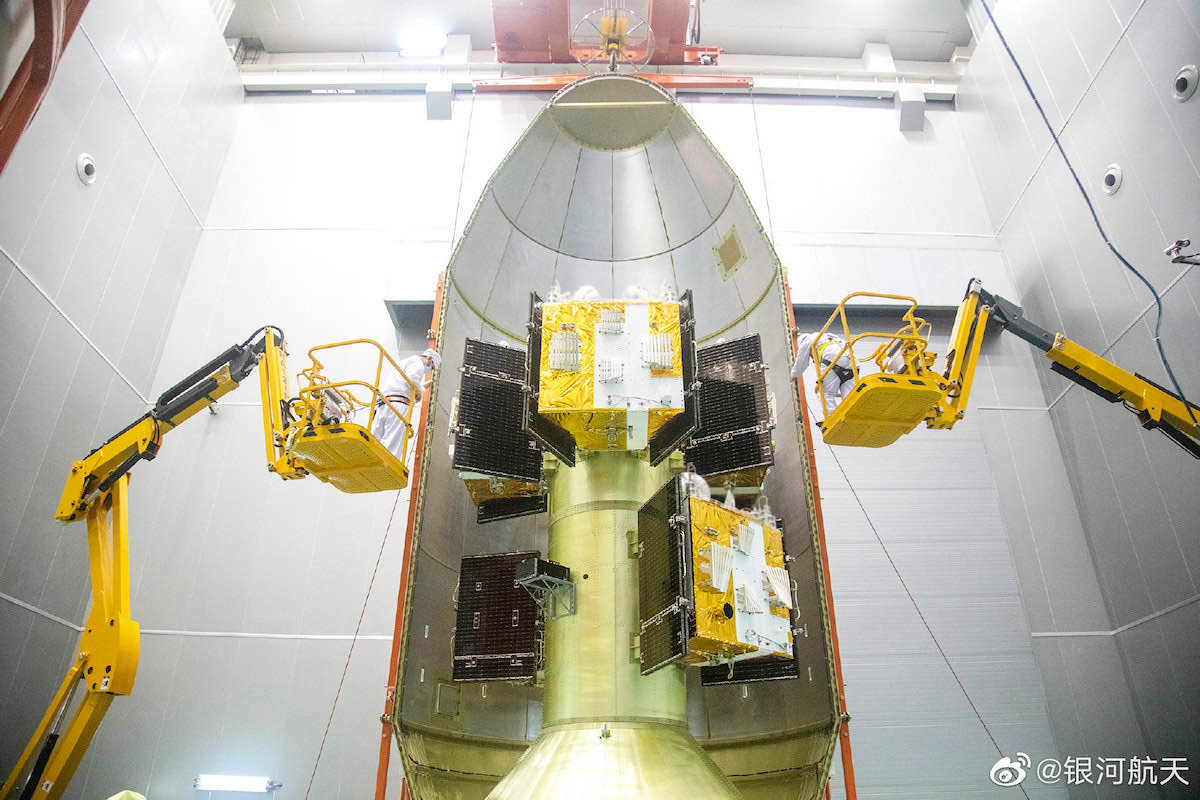
Six demonstration satellites for a future Chinese broadband internet mega-constellation launched March 5 on a Long March 2C rocket.
The six satellites, manufactured and owned by a Beijing-based company named Galaxy Space, will test broadband data relays, in-space networking, and integrated remote sensing and communications technologies. Galaxy Space said the systems tested on the six new Yinhe 2 satellites could lay the groundwork for a future “mega-constellation” of internet satellites.
The Yinhe 2 satellites launched at 0601 GMT (1:01 a.m. EST; 2:01 p.m. Beijing time) on March 5 from the Xichang space base in Sichuan province, located in southwestern China.
A Long March 2C rocket tracked southeast from Xichang, shedding its liquid-fueled first stage a few minutes after liftoff to fall on Chinese territory downrange. A second stage delivered the six Yinhe 2 satellites, along with a small remote sensing CubeSat, to an orbit around 300 miles (490 kilometers) above Earth.
U.S. military radars detected the satellites flying in an orbit inclined 63.4 degrees to the equator. Galaxy Space declared the mission a “complete success” in a statement.
Galaxy Space launched its first satellite, named Yinhe 1, in January 2020 on a small-class Kuaizhou 1A rocket. The company was founded in 2016.
The new Yinhe 2 satellites launched together on a mounting structure inside the Long March 2C rocket’s payload fairing, a wider shroud that China first used on a Long March 2C mission last year. Each Yinhe 2 spacecraft has a communications capacity greater than 40 Gbps, with an average mass of around 419 pounds (190 kilograms), according to Galaxy Space.

The six new satellites will work together with the Yinhe 1 satellite in a constellation. Ground teams will run tests on the network, verifying the performance of satellite and ground systems before China deploys a larger satellite internet constellation.
The Yinhe 2 satellites also carry cameras to take photos and videos of Earth’s surface, Galaxy Space said.
China is planning to launch a constellation of up to 13,000 satellites to provide global internet connectivity, according to regulatory filings with the International Telecommunication Union. Technologies proven out by companies like Galaxy Space could make their way into the Chinese mega-constellation, which is analogous to commercial networks like Starlink and OneWeb already well into deployment.
SpaceX has the approval of the Federal Communications Commission to deploy a network of 12,000 Starlink internet satellites, and the company has signaled plans to launch 30,000 additional spacecraft for additional broadband coverage. More than 2,200 Starlink satellites have already been launched by SpaceX.
OneWeb, a London-based company, has launched 328 satellites of a planned fleet of 648 spacecraft. Like SpaceX, OneWeb has preliminary plans to launch thousands more satellites if market demand materializes.
China’s Yinhe 2 satellites look similar to OneWeb’s satellites, with the same basic shape and outline.
Amazon’s Kuiper satellite internet network is in an earlier stage development, and the European Union is studying its own satellite communications mega-constellation.
Email the author.
Follow Stephen Clark on Twitter: @StephenClark1.
